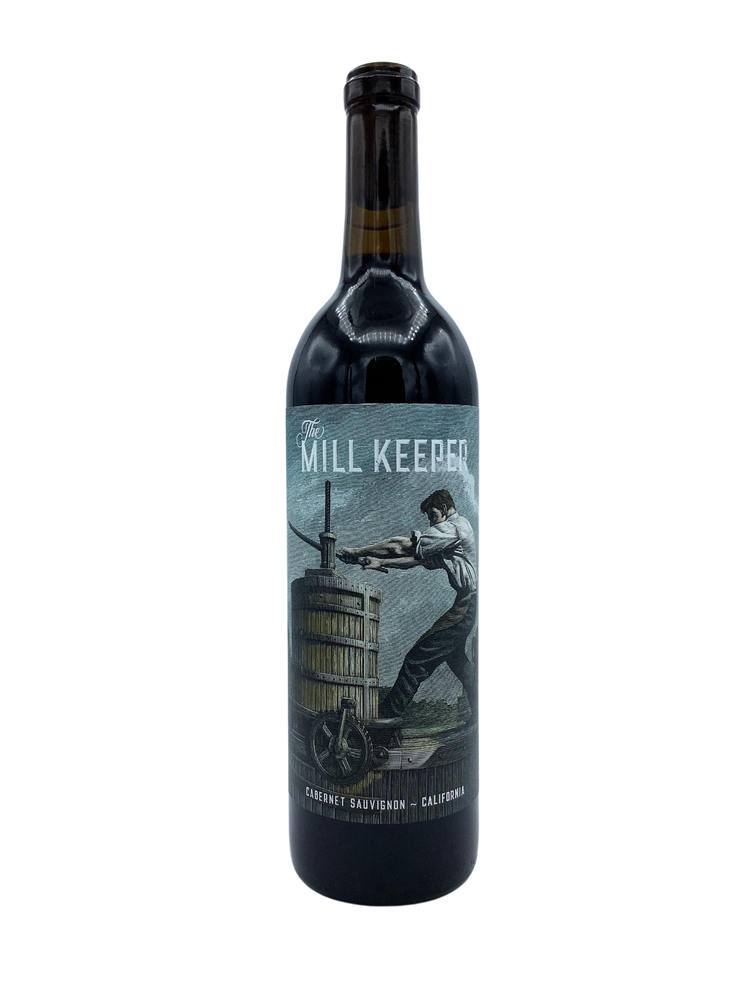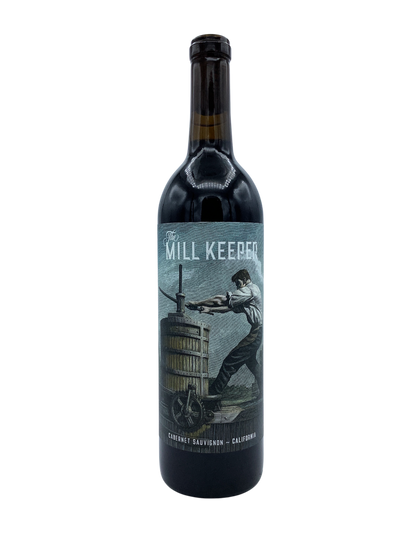Mill Keeper Cabernet Sauvignon 2019
- Regular price
- $24.99
- Regular price
-
$69.99 - Sale price
- $24.99
- Unit price
- per
Country/State California
Region Napa Valley
Subregion
Vineyard/Proprietary
Type Cabernet Sauvignon
Read About the WineGet to Know This Product
It’s actually a pretty good story so sit back, relax and pour yourself some Napa Cabernet.
After the War of 1812, George Calvert Yount left his wife and three children in Missouri and struck out for Sante Fe to strike his fortune as a fur trapper. Eventually he fell in with the Wolfskill party, which led him to California. There he came under the employ of the great general Mariano Guadalupe Vallejo (California being Mexico at the time).
Yount must have been one heck of a carpenter for M.G. Vallejo, because in 1836 the general awarded him a land grant to Rancho Caymus. There he built the valley’s first grist mill (for making flour). In 1843, Yount received a second grant of Rancho La Jota on Howell Mountain, It also had a stream, Coon Creek, so there he built a sawmill.
His family had long since rejoined him, and it is his daughters (and their husbands) who founded the villages of Rutherford and Sebastapol, Napa. Because Sonoma’s Sebastapol had come first, the town was later renamed to Yountville. Around these two villages, the family planted some of Napa Valley’s first vineyards, and they became the grape sources for the new winery Inglenook.
A young English surgeon by the name of Edwin Bale purchased one of Yount’s mills, after first marrying General Vallejo’s daughter. And their daughter later married a Krug, founding one of Napa’s earliest wineries in 1861 – Charles Krug, which continues to this day.
You’ll notice a trend here: All of these names—Krug, inglenook, Coon Creek, Caymus, La Jota; are prime-time operating wineries and vineyards to this day. They are some of Napa Valley’s most expensive wine, if not some of the world’s. And they all started way back then.
So let’s add two more names to the mix and then finally get to drinking this wine – because history makes me thirsty.
The first mill eventually came into the hands of the Lancelot Gamble, a rancher and crop farmer in 1916. Between 1955 and 1968, George and Mary Ann (son and daughter-in-law to Lance) converted the family almost entirely into grape farmers and became founding members of the Napa Valley Agricultural Trust. Most of the fruit was sold—primarily to Beringer—but with one sneaky exception.
The site of that first mill, now the Family Home Vineyard of the Gambles, sits directly below the only vineyard land of Screaming Eagle – which happens to be Napa’s priciest Cabernet. The point being, those early Napa pioneers knew what the heck they were doing when they planted grapes. To this day, the sites make exceptional wine:
The Mill Keeper soars out of the glass with ripe notes of blackberries, black cherries, cocoa powder and so much more: hints of anise, violets and just a touch of black truffle provide a graceful backdrop for the primary fruit. The palate is full-bodied and beautifully textured with its firm and fully integrated tannins. The finish offers incredible length that rides on its full-bodied fruit character, making it perfect for drinking now but certainly a 10-year sojourn into the cellar will do it no harm. After having just one glass, I think you’ll agree – this is undeniably stunning Cabernet.
Tom Gamble, son of George and Mary Ann, is a humble man. But I think the history lesson above is worth noting – this wine, named to so honor Napa’s most intrepid pioneers – comes from some of the best-recognized grape-growing sites in the entire Valley. And if you compare prices (especially to neighbor Screaming Eagle) it is always a stunning value. With our sale price, now even more so. Cheers!
*So what is the asterisk for? To our understanding, this winery and its wine are in a bit of a transition (which probably accounts for the price break). Given the recent history of California fires AND the main winery (Gamble) wanting to change the image of this wine, they opted to drop the vintage for flexibility. Again, to our understanding, this is almost entirely 2019 vintage, with a little bit of 2021.


